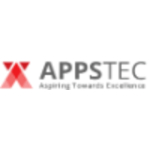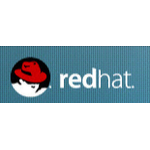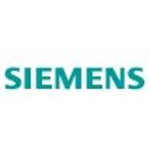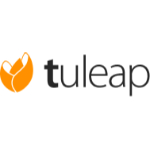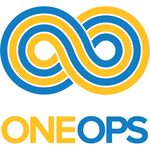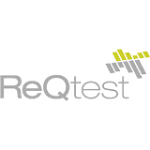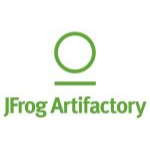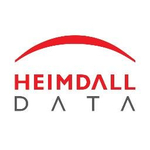TechnologyCounter provides genuine, unbiased real user reviews to help buyers make informed decisions. We may earn a referral fee when you purchase through our links, at no extra cost to you.
List of 15 Best Application Lifecycle Management Software
Showing 1 - 15 of 30 productsAppsTec DMS, a powerful document management system designed to revolutionize the way businesses handle their digital assets. With its user-friendly interface features, AppsTec DMS streamlines the process of organizing, storing, and sharing documents,...Read AppsTec DMS Reviews
ApTest is a tool for all of your software testing needs. With its user-friendly interface features, ApTest simplifies the testing process and ensures the highest level of accuracy. Say goodbye to tedious and error-prone testing methods and hello to e...Read ApTest Reviews
Revenera Usage Intelligence is the game-changing software that helps businesses analyze and understand how their customers are interacting with their products. With its powerful features and insights, Revenera Usage Intelligence empowers companies to...Read Revenera Usage Intelligence Reviews
Red Hat OpenShift is a cloud computing platform designed to help businesses accelerate their digital transformation. With its advanced Kubernetes technology and robust features, OpenShift simplifies application deployment and management, empowering o...Read Red Hat OpenShift Reviews
Aha, the ultimate software solution for all your business needs. With its intuitive interface and powerful features, Aha streamlines your processes and ensures maximum efficiency. Say goodbye to complicated systems and hello to seamless management wi...Read Aha Reviews
Favro is a project management software that simplifies your workflow and maximizes your teams productivity. With intuitive features and easy-to-use interface, Favro streamlines your projects, tasks, and deadlines, allowing you to focus on what truly...Read Favro Reviews
Polarion REQUIREMENTS is a software designed to streamline your requirement management process. Say goodbye to tedious spreadsheets and endless back-and-forth communication. With Polarion REQUIREMENTS, easily gather, manage, and track all your projec...Read Polarion REQUIREMENTS Reviews
Tuleap is a versatile software solution that enables teams to collaborate, track progress, and manage projects efficiently. With its user-friendly interface and robust features, Tuleap simplifies complex project management processes and promotes seam...Read Tuleap Reviews
OneOps is a software platform that is changing the game for businesses of all sizes. With its intuitive interface and powerful features, OneOps offers a seamless solution for continuously managing and deploying applications on any cloud. Say goodbye...Read OneOps Reviews
Dynatrace is trusted by some of the worlds leading brands as a top-tier software intelligence platform. With its advanced features and innovative technology, Dynatrace provides real-time monitoring, deep insights, and automatic problem resolution for...Read Dynatrace Reviews
ReQtest is a software designed to streamline and revolutionize the way you manage your testing processes. With its user-friendly interface features, ReQtest simplifies the entire testing journey, making it the ultimate choice for businesses of all si...Read ReQtest Reviews
Helix TCM the top-rated software designed to streamline and enhance your test case management process. With its advanced features and user-friendly interface, Helix TCM allows for efficient test planning, execution, and tracking. Revolutionize your t...Read Helix TCM Reviews
Artifactory is a leading software for managing your organizations software development lifecycle. With features designed to streamline collaboration, automate processes, and enhance overall efficiency, Artifactory is the perfect tool for modern softw...Read Artifactory Reviews
Phabricator is a tool for effective project management and collaboration. This versatile software offers a wide range of features to help streamline workflows, coordinate tasks, and foster efficient communication among teams. With its intuitive inter...Read Phabricator Reviews
Heimdall Data is a software that optimizes and accelerates database performance. With its intelligent caching and load balancing capabilities, Heimdall Data ensures seamless is a data management for businesses. Say goodbye to slow loading times and h...Read Heimdall Data Reviews
- What Is Application Lifecycle Management Software?
- Top Reasons Why Businesses Need Application Lifecycle Management Software?
- What Are the Top Key Features of Application Lifecycle Management Software?
- What Are the Top Benefits of Application Lifecycle Management Software?
- What Are the Steps to Choose the Right Application Lifecycle Management Software?
- What Are the Types of Application Lifecycle Management Software for Different Industries?
- What Are the Technology Trends for Best Application Lifecycle Management Software?
- What Are the Deployment Options for Application Lifecycle Management Software?
What Is Application Lifecycle Management Software?
Application lifecycle management software (ALM) refers to a collection of tools and methodologies utilized by software development and IT teams to effectively oversee the whole life cycle of an application. ALM software encompasses a range of functionalities, including but not limited to requirements management, version control, and collaboration tools.
Application Lifecycle Management (ALM) software serves as an effective tool for software development teams to effectively monitor and manage their applications throughout the whole development process, starting from the initial coding phase to the final result. Application Lifecycle Management (ALM) facilitates the maintenance of organizational structure and adherence to project timelines during the development and deployment of applications.
The utilization of the best Application Lifecycle Management (ALM) encompasses various stages, including planning, design, coding, and testing, with the ultimate goal of ensuring the timely and cost-effective completion of software projects. The ALM (Application Lifecycle Management) solution facilitates the monitoring of system modifications, early detection of software defects, and seamless sharing of files and documents with relevant stakeholders.
The ALM software framework facilitates transparency by ensuring that all members of the team are informed about the progress of the application. Application Lifecycle Management (ALM) also facilitates the process of gathering input from users, enabling teams to iteratively enhance, refine, and update the application under the specific requirements and preferences of the users.
By assuming full control over the life-cycle of the program, teams can guarantee that the application fulfills all specified requirements, functions well, and is delivered within the designated timeframe.
Application lifecycle management tools facilitate time, cost, and stress reduction for teams by ensuring the initial construction of their applications is executed accurately.
Top Reasons Why Businesses Need Application Lifecycle Management Software?
1. Improved speed and agility: Application lifecycle management (ALM) software facilitates the enhancement of enterprises' overall efficiency and adaptability through the automation of routine processes and the establishment of digital workflows.
2. Streamlined processes: The implementation of this approach enhances the efficiency of the development process by facilitating the management of modifications and conflicts that may arise across diverse development teams.
3. Cost savings: ALM software solutions aid enterprises in cost management by mitigating the need for manual processes and minimizing the time investment in development tasks.
4. Automated testing: Application lifecycle management tools offer automated quality assurance capabilities, facilitating enterprises in gaining a more comprehensive comprehension of their application's performance.
5. Reduced risk: Application lifecycle management (ALM) solutions play a crucial role in mitigating risks by effectively handling bugs and problems, hence maintaining the reliability and security of applications.
6. Improved collaboration: The use of this solution enhances team communication and fosters improved collaboration, hence facilitating the expedited achievement of corporate objectives.
7. Better visibility: Application lifecycle management (ALM) solutions provide organizations with the ability to effectively manage and oversee their projects and development processes, enabling enhanced visibility and control.
8. Flexible environment: The solution offers a versatile setting that allows teams to promptly incorporate support or novel features to fulfill company requirements.
9. Enhanced security: The top Application lifecycle management (ALM) solutions offer increased security measures for enterprises, thereby guaranteeing the reliability and compliance of their applications by prevailing requirements.
10. Improved scalability: Application lifecycle management tools facilitate the seamless addition or removal of users within enterprises, hence enhancing their scalability and responsiveness to evolving requirements.
11. Easy access: The best Application lifecycle management facilitates convenient access to comprehensive data, enabling enterprises to retrieve the necessary information at their convenience.
12. Automated workflows: Application lifecycle management (ALM) solutions facilitate the optimization of workflows, enabling enterprises to enhance the efficiency of information processing.
13. Improved productivity: These solutions have been found to have a positive impact on enterprises, resulting in time and cost savings, as well as enhanced overall productivity.
14. Repurposing: Application lifecycle management (ALM) solutions facilitate the efficient reuse and repurposing of both information and code inside enterprises, resulting in significant time and cost savings.
15. Real-time insights: The system offers teams instantaneous insights, enabling them to enhance their decision-making process in terms of quality and speed.
What Are the Top Key Features of Application Lifecycle Management Software?
The key features of application lifecycle management software include:
1. Version control: The platform allows users to generate customized iterations of an application and effectively monitor modifications made to the application over its entire lifespan.
2. Continuous integration: Enables the automated integration of diverse application components into a cohesive, consolidated application.
3. Application packaging: The platform allows customers to bundle their applications in a manner that aligns with the demands and criteria of deployment and distribution.
4. Automation: The system automates the process of deploying applications, conducting testing, and performing various operational functions.
5. Automated testing: Enables the implementation of automated testing procedures for apps across the stages of development and deployment.
6. Release management: Assisting in the optimization of application releases and ensuring accurate monitoring of changes.
7. Database management: The software offers assistance for several database functions, including but not limited to backups, replication, and scalability.
8. Monitoring: Enables the monitoring of application usage and performance, as well as the identification of any potential issues that may occur throughout the lifespan of the program.
9. Governance: Offers assistance in guaranteeing the effective management and monitoring of all available resources.
10. Security: Assisting in maintaining the security of apps during their entire lifecycle is of paramount importance.
What Are the Top Benefits of Application Lifecycle Management Software?
The top benefits of application lifecycle management (ALM) software include:
1. Improved collaboration between teams: ALM software facilitates enhanced team productivity through improved communication and cooperation. The utilization of ALM software facilitates the reduction of project delays and cost overruns within organizations by offering a centralized platform for stakeholders.
2. Enhanced development process: The utilization of the best application lifecycle management software facilitates the optimization of the development process through the provision of automated solutions for various tasks, including work planning, estimating, and tracking, as well as reporting and analysis. This phenomenon leads to enhanced project efficiency and facilitates teams in generating items of superior quality.
3. Reduced costs: Application lifecycle management tools aids firms in mitigating overall development costs through the elimination of unnecessary jobs and manual processes. The utilization of ALM software additionally enables expedited completion of tasks, hence obviating the necessity for costly resources.
4. Improved governance: The ALM software facilitates the integration and regulation of application lifecycle governance procedures, hence enhancing the level of visibility and traceability within the development process. This framework defines unambiguous roles and duties, together with explicit regulations and processes.
5. Improved security and compliance: Application lifecycle management software offers an augmented level of security and compliance, aiding firms in guaranteeing that their applications adhere to security, legal, and regulatory prerequisites.
6. Increased agility: The utilization of application lifecycle management software facilitates enhanced organizational agility and responsiveness in adapting to evolving requirements. This enables teams to efficiently create and implement software with reduced levels of risk and cost.
What Are the Steps to Choose the Right Application Lifecycle Management Software?
1. Assess current application lifecycle management needs: Begin by gaining a comprehensive understanding of the existing requirements for application lifecycle management within the company, as well as identifying the specific types of applications that are intended to be managed.
2. Research available solutions: Conduct a comprehensive analysis and comparison of several options in order to determine the most suitable option for your specific application, requirements, and financial constraints.
3. Evaluate features and functionality: It is imperative to assess whether the features and functionality of the software align with the requirements of your application lifecycle management and ensure that it adheres to the standards set by your organization.
4. Consider hosting options: The objective is to ascertain the feasibility of hosting the program either in an in-house environment or through a cloud-based solution.
5. Assess scalability: Assess the software's capacity to effectively accommodate expanding requirements and adapt to evolving circumstances.
6. Assess support and training: It is imperative to ensure that the vendor provides sufficient customer support and training opportunities for users.
7. Get a free trial: Kindly submit a formal request for a complimentary trial of the program in order to ascertain its conformity with the stated features and successful completion of all requisite assessments.
8. Obtain pricing information: It is advisable to inquire about the cost details in advance to ascertain that the proposed solution aligns with the allocated budget.
9. Sign the contract: Once the optimal application lifecycle management software has been chosen for the firm, it is advisable to proceed with signing the contract with the selected vendor.
What Are the Types of Application Lifecycle Management Software for Different Industries?
Application lifecycle management software is employed to effectively oversee and optimize the various stages involved in the development, deployment, and maintenance of applications across their entire lifespan. Various forms of ALM software are available, depending on the specific characteristics of the sector in question. As an illustration,
1. Lifecycle management for Web/Mobile Applications: ALM software, also known as Application Lifecycle Management software, facilitates the design and development of web and mobile apps, enabling teams to enhance their efficiency and expedite the development process. These tools facilitate the automation of many stages in the development process, encompassing tasks like as monitoring progress, doing application testing, deploying to multiple platforms, and overseeing the management of software releases.
2. Lifecycle management for Manufacturing Processes: The utilization of the best application lifecycle management software in manufacturing processes facilitates comprehensive oversight and control, spanning the whole lifecycle of a product, commencing from the initial design phase and culminating in the final delivery stage. The tools within this domain offer insights into the design and quality of products, together with the ability to analyze product performance and gather customer feedback.
3. Lifecycle management for Asset Management: The application lifecycle management tools utilized for asset management facilitate the efficient management and monitoring of various assets, including machinery, equipment, software, and inventories. This technology facilitates the ability of businesses to exercise control and oversight over the use of assets, monitor maintenance activities, and obtain real-time data to automate operational processes.
4. Lifecycle Management for Supply Chain Management: The utilization of Application Lifecycle Management (ALM) software in Supply Chain Management (SCM) facilitates the effective management and optimization of various processes across the whole supply chain. This technology facilitates the ability of firms to monitor inventory levels, enhance demand planning, and optimize logistics management procedures.
The selection of ALM software is contingent upon the specific industry and application in question. The utilization of top Application Lifecycle Management (ALM) software is vital to facilitate an effective and prosperous development process of applications.
What Are the Technology Trends for Best Application Lifecycle Management Software?
The prevailing technology trends in the realm of application lifecycle management software are shifting towards cloud-based platforms, automation, and analytics. Cloud-based solutions have gained significant popularity due to their ability to enhance scalability and flexibility for organizations seeking to effectively manage their applications.
The significance of automation is increasing due to its ability to decrease the extent of manual labor required in the management and deployment of applications, while concurrently enhancing efficiency. Analytics can additionally offer valuable insights into the performance of apps and the behavior of users, thereby enabling companies to enhance their understanding of how their applications are being utilized.
Containers and microservices are gaining increasing popularity in the realm of application development and deployment owing to their notable attributes of portability and scalability.
What Are the Deployment Options for Application Lifecycle Management Software?
The deployment options for application lifecycle management software typically include the following:
1. On-premise deployment: This alternative entails the installation of the program on servers located within the organization's premises. The acquisition of servers and the establishment of software necessitate an initial financial investment.
2. Cloud-based deployment: This implies that the software is deployed and administered over an internet platform. The aforementioned technology offers enhanced levels of flexibility, scalability, availability, and dependability. Numerous firms choose this option due to its lack of initial financial investment and its ability to decrease IT expenses.
3. Hybrid deployment: This approach amalgamates the benefits of on-premise and cloud-based deployment, enabling the program to be partitioned into components that are hosted both internally and in the cloud.
4. SaaS (Software as a Service) deployment: This particular deployment model involves the delivery of software as a service through a cloud-based infrastructure, with users subscribing to access and utilize the program. There is no initial financial investment required for this service, and the software operates on hardware that is handled by the vendor. The increasing adoption of this technology can be attributed to its user-friendly nature and flexibility to accommodate growth.
The following are the prevalent deployment alternatives for software designed to handle the entire lifespan of an application. The selection of an option may be contingent upon the business requirements and financial resources of the company.
